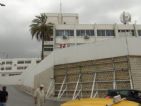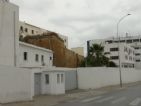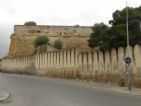
Hasba
Comparisson reports are under license of:

Lo que dice el Arxiduc:
“Not far from the palace is a broad plaza and the old Hasba, half in ruins. It is one of the many military fortresses in Tunis though the most picturesque. A pretty and very typical Moorish gate consisting of colourful tile plates leads to the east, and, above, the Tunisian flag waves from a pole. Next to the fortress and a minaret, a palm tree competes with the latter in terms of elegance and vitality. If you turn from the Hasba little by little to the left, you reach a small plaza beautified by flowers and bushes; a fountain bubbles and fills a wide pond, spreading its wealth above the entire city. From here you can see Tunis better. Numerous mosques with their minarets and colourful flags, isolated marabout shrines, garrisons topped by battlements and gateways stand out amongst the mass of flat rooftops as if an oasis. In the distance we can see La Goulette; in the middle is the entire salty lagoon, shining like a diamond under the sunlight, and the rest of the bare yellowish outskirts of Tunis.”
( Ph. 4 Hasba)
Archduke Ludwig Salvator of Austria, Tunis. Ein bild aus dem nordafrikanischen leben, Heinrich Mercy, Prague, 1870
Datos proyecto Nixe III:
The Kasbah is on the highest point in Tunis. The majority of Tunisia’s official government buildings are now found here, and many of the areas are cordoned off and closely monitored by police.
We can see some of the Kasbah’s old walls, though most of the old citadel has disappeared. Worth noting is that some of the Ministry of Defense’s buildings have been built between some of the old walls.





















